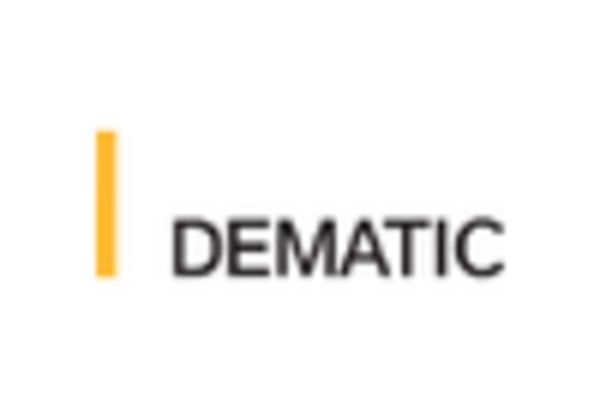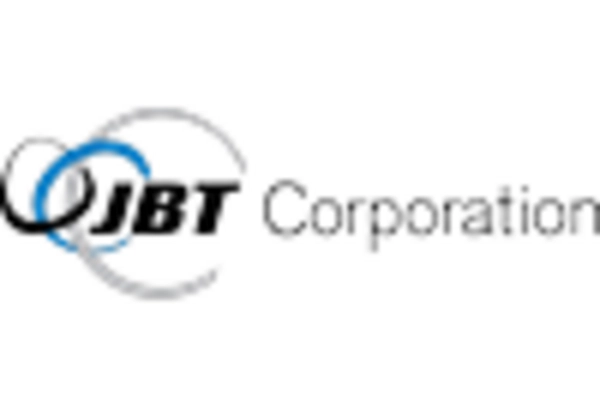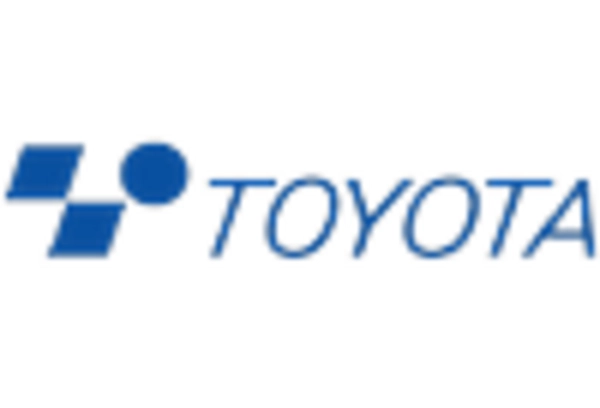E-commerce Growth
The surge in e-commerce activities is significantly impacting the automated guided-vehicle market. With online shopping becoming increasingly prevalent, logistics and warehousing operations are under pressure to enhance efficiency and speed. The US e-commerce sector has seen a growth rate of over 15% annually, necessitating the implementation of advanced technologies to meet consumer demands. Automated guided vehicles play a crucial role in streamlining warehouse operations, facilitating faster order fulfillment, and reducing delivery times. As companies strive to keep pace with the rapid growth of e-commerce, the demand for automated guided vehicles is expected to rise, further solidifying their position in the logistics and supply chain sectors.
Rising Labor Costs
The automated guided-vehicle market is experiencing growth due to the rising labor costs in various sectors. As companies face increasing expenses related to wages and benefits, the adoption of automated guided vehicles becomes a viable solution to mitigate these costs. In the US, labor costs have escalated by approximately 3.5% annually, prompting businesses to seek automation solutions that enhance operational efficiency. Automated guided vehicles can operate continuously without the need for breaks, thereby maximizing productivity. This shift not only reduces reliance on human labor but also allows companies to allocate resources more effectively. Consequently, the trend towards automation is likely to continue, driving demand for automated guided vehicles across industries such as manufacturing, warehousing, and logistics.
Supply Chain Optimization
The need for supply chain optimization is a significant factor driving the automated guided-vehicle market. Companies are increasingly focused on enhancing their supply chain efficiency to remain competitive. In the US, supply chain disruptions have highlighted the importance of resilient logistics systems. Automated guided vehicles contribute to this optimization by improving inventory management, reducing lead times, and minimizing errors. As organizations seek to streamline their operations and respond swiftly to market changes, the adoption of automated guided vehicles is expected to grow. This trend reflects a broader commitment to enhancing supply chain resilience and efficiency in an ever-evolving market landscape.
Technological Integration
The integration of advanced technologies into the automated guided-vehicle market is a key driver of growth. Innovations such as artificial intelligence, machine learning, and IoT are enhancing the capabilities of automated guided vehicles, making them more efficient and adaptable. In the US, the market for AI in logistics is projected to reach $10 billion by 2026, indicating a strong trend towards technological adoption. These advancements enable vehicles to navigate complex environments, optimize routes, and improve safety measures. As businesses increasingly recognize the benefits of integrating these technologies, the automated guided-vehicle market is likely to expand, offering more sophisticated solutions to meet diverse operational needs.
Sustainability Initiatives
Sustainability initiatives are becoming a prominent driver in the automated guided-vehicle market. As businesses in the US prioritize environmentally friendly practices, the demand for energy-efficient and low-emission solutions is on the rise. Automated guided vehicles, particularly those powered by electric or hybrid technologies, align with these sustainability goals. The market for electric vehicles in logistics is projected to grow significantly, with many companies aiming to reduce their carbon footprint. By adopting automated guided vehicles, organizations can not only enhance operational efficiency but also contribute to their sustainability objectives. This alignment with environmental goals is likely to propel the growth of the automated guided-vehicle market in the coming years.

















Leave a Comment